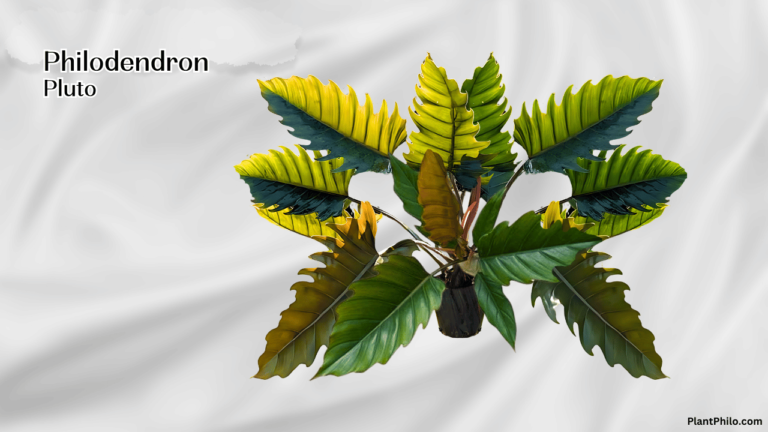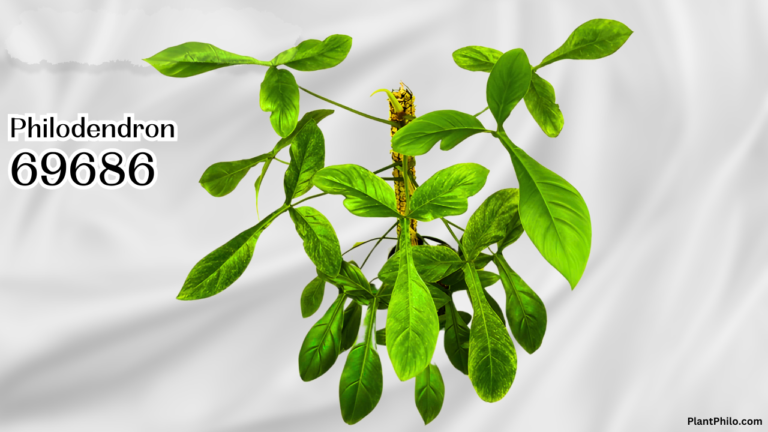How to Care for Philodendron: Green Thumb Not Required
Think you have a black thumb? Philodendrons might just change your mind. Discover the surprisingly simple secrets to keeping these tropical beauties thriving in your home.
Philodendrons are taking over Instagram feeds, and for good reason. Their popularity is well deserved; these leafy beauties are not only striking in appearance but also boast impressive resilience. Whether you’re a seasoned plant parent or new to the world of indoor gardening, philodendrons offer the satisfaction of lush foliage without demanding extensive plant care expertise.
Caring for a philodendron is straightforward and rewarding. These plants are forgiving, often thriving in a variety of light conditions and withstanding occasional lapses in watering.
With their ability to adapt to lower light and their minimal watering needs, philodendrons make an excellent choice for those looking to enhance their living space with a touch of nature. By understanding a few key aspects of their care, you can ensure your Philodendron not only survives but flourishes in your care.
Key Takeaways
- Philodendrons are low-maintenance and versatile, ideal for indoor gardening novices and experts alike.
- These plants adapt to various light conditions and can tolerate sporadic watering.
- Basic care includes proper nutrition, timely potting adjustments, and regular maintenance for optimal growth.
Understanding Philodendron Needs
Philodendrons are popular for their flexibility and resilience, but even these easy-going plants have preferences. Ensuring you cater to their specific needs will keep your Philodendron thriving.
Lighting Requirements
Philodendrons do best in indirect sunlight. Place yours near a window where it can get bright but filtered light. Too much direct sun can scorch their leaves, while too little can stunt growth.
Watering Techniques
You’ll want to water your Philodendron when the top inch of soil feels dry. Overwatering can lead to root rot, so it is important to check the soil’s moisture before watering.
Ideal Temperature and Humidity
Your Philodendron enjoys a warm and humid environment. Aim for temperatures between 65-78°F and maintain a humidity level of around 60%. If your home is dry, a humidifier can help.
Soil and pH
The perfect potting mix is well-draining with high organic matter. Aim for a pH between 5.0 and 6.0. A mix of potting soil, perlite, and peat moss usually does the trick.
Fertilizer
Fertilize your Philodendron every month during spring and summer with a balanced, water-soluble fertilizer. Ease up in fall and winter, as your plant’s growth will naturally slow down.
Nutrition and Fertilization
Philodendron plants are not just about water and sunlight; they also need the right balance of nutrients to thrive. Let’s break down the what and when of feeding your leafy friend.
Fertilizing Schedule
Your Philodendron’s growth and health are greatly influenced by your fertilizing routine. During the growing season, which is typically from spring to fall, you should fertilize your Philodendron’ Moonlight’ every two to four weeks with a balanced, water-soluble fertilizer.
In the dormant winter months, you can cut back to feeding every six to eight weeks as the plant’s growth slows down.
Essential Nutrients
Philodendrons generally do well with a balanced fertilizer, meaning an equal ratio of nitrogen (N), phosphorus (P), and potassium (K). A common recommendation is a 3-1-2 NPK ratio, but a balanced 20-20-20 or 10-10-10 fertilizer also works well.
- Nitrogen (N) for leaf growth
- Phosphorus (P) for root development
- Potassium (K) for overall health
It’s important to use a fertilizer that offers these nutrients in a balanced formula. Additionally, micronutrients like calcium and magnesium support the plant’s vital functions.
Always follow the instructions on your fertilizer’s packaging to avoid overfeeding, which can lead to nutrient burn and damage to your plant.
Potting and Repotting
When you first bring home your Philodendron, you’ll want to make sure it has the perfect pot to thrive in. Your Philodendron prefers a container with adequate drainage to prevent water from pooling. A terrific pot choice would be one made of breathable materials like terracotta or ceramic with a hole at the bottom.
Repotting your Philodendron is key to keeping it flourishing. Typically, you should look at repotting every couple of years or when you notice that its growth has started to slow down.
Here’s a simple step-by-step guide:
- Prepare your new pot: Opt for a pot that’s slightly larger than the current one.
- Mix your soil: Philodendrons love well-draining soil. A blend of peat, perlite, and bark works wonders.
- Remove the plant: Carefully slide the plant out, keeping the root system intact.
- Loosen the roots: Gently untangle the root ball to encourage new growth.
- Transfer the plant: Settle your Philodendron into the new pot and fill in around it with the fresh potting mix.
- Water and enjoy: Give it a good drink and place it back in its favorite spot.
Remember, after repotting, give your plant some time to adjust. Keep your watering consistent, but don’t overdo it. Allow the top inch of the soil to dry out between waterings, and you’ll see your Philodendron bounce back in no time!
Pruning and Maintenance
When caring for your Philodendron, keeping the leaves clean is a game-changer. Dust can block sunlight and mess with photosynthesis, so give those leaves a gentle wipe with a damp cloth now and then. This small step keeps them glossy and healthy, which is exactly what you want.
Pruning your Philodendron helps more than just the plant’s looks. It encourages new growth and keeps the plant from getting too wild and wooly. Here’s how you tackle it:
- Sterilize your tools: Clean cuts mean healthier plants. Use rubbing alcohol or a bleach-water mix to sterilize your shears before you start.
- Snip the right spot: Aim to cut just above a leaf node (that’s where new growth will pop out). Use sharp shears for a clean cut.
- Timing it right: Late spring or early fall is prime time for pruning, but if you notice dead or yellow leaves, take those out whenever.
For climbing Philodendrons, you’re going to want to give them a leg up with some support. Using a moss pole or trellis isn’t just about guiding growth; it actually mimics their natural environment, encouraging them to grow larger leaves. Just gently tie the stems to the support, and they’ll take it from there. Happy pruning and supporting!
Propagating Philodendrons
Propagating your Philodendron is a simple and rewarding way to get more of these lush plants. You can use either water or soil as a medium for rooting, depending on what’s more convenient for you.
Stem Cuttings in Water
Start by snipping off a 6-inch section of the stem just below a node — that’s where the leaves and roots pop out. Pluck off the lower leaves and pop the stem into a jar of water.
Keep the setup in a spot with bright, indirect light, and replace the water when it gets cloudy. In a few weeks, you should see little roots!
Stem Cuttings in Soil
For soil propagation, again, cut a section of stem with at least one node and a couple of leaves. Dip the cut end into rooting hormone, if you have it, and stick it into a moist potting mix.
Ensure the node is buried, as that’s where the roots will emerge from. You might want to use a support structure like a bobby pin to keep the stem in place.
Aftercare
Whichever method you choose, after the roots are a couple of inches long, transplant the cutting into a pot filled with a well-draining soil mixture.
Be a bit gentle during the first few weeks, maintaining the moisture level without overwatering to let your new Philodendron settle in its new home.
Dealing with Pests and Diseases
When taking care of your Philodendron, you might run into some unwanted guests or pesky illnesses. Don’t sweat it! You’ve got this.
Here’s a quick rundown on what to look out for and how to handle them:
Common Pests
- Aphids: These little suckers literally suck the sap from your plant.
- Mealybugs: Watch for a cotton-like substance on your Philodendron.
- Scales: These buggers are small and brown and like to hide under leaves and stems.
- Spider Mites: Look for fine webs and yellow or brown spots on the leaves.
Quick Pest Control Tips
- Wash them away! Use water pressure from a hose or sink sprayer.
- For stubborn critters, swipe them with a cotton pad dipped in rubbing alcohol.
- Think about introducing natural predators like ladybugs if you notice aphids.
- Insecticidal soaps or neem oil are effective organic options you can consider.
Troublesome Diseases
- Root rot: It’s a bummer and usually due to overwatering.
- Leaf spot: Dark or black spots on leaves are a telltale sign.
Disease Defense Tactics
- Make sure your plant has good drainage, and don’t let it sit in water.
- Prune affected foliage and dispose of it far from your healthy plants.
- Ensure there’s enough airflow around your Philodendron; they love their personal space.
- If in doubt, a fungicide could help but always follow the label instructions.
Troubleshooting Common Problems
When your Philodendron starts showing signs of unhappiness, don’t stress! Check out this quick-fix guide to get it back on track.
| Problem | Cause | Solution |
| Yellowing Leaves | Overwatering or poor drainage | Cut back on watering and ensure proper drainage. |
| Brown Tips | Dry air or over-fertilizing | Increase humidity and ease up on feeding. |
| Wilting | Inconsistent watering | Establish a regular watering schedule. |
| Pests (e.g., aphids, spider mites) | Overly warm, dry conditions | Wash leaves and use a natural insecticidal soap. |
Prevention Tips
- Regular Checks: Keep an eye on your plant’s leaves; catching problems early is half the battle.
- Consistent Watering: Your Philodendron likes its soil moist but not soggy. Find a happy medium and stick to it.
- Balanced Feeding: Too much love in the form of fertilizer isn’t always a good thing. Feed your plant only as recommended.
- Good Air Flow: Ensure your plant pal isn’t suffocated by stagnant air; a gentle breeze can work wonders.
- Clean Leaves: Dust-free leaves mean a healthier plant and fewer pests. Give them a gentle wipe now and then.
Frequently Asked Questions
Hey there, plant lovers! If you’ve got a Philodendron at home, stick around. This part’s all about getting down low and keeping your green buddy happy and thriving. From pruning tips to water needs and lighting, we’ve covered your most burning questions.
What’s the right way to prune a Philodendron for healthy growth?
Snip off any yellow or dead leaves at the base of the stem to keep your Philodendron looking sharp. Trimming back leggy vines encourages fuller, more luxurious growth.
Can you give tips for nurturing philodendron foliage?
Keep the leaves dust-free with a gentle wipe using a soft, damp cloth. This allows the plant to absorb more light and stay healthy. For added shine and a dust repellent, dilute a drop of neem oil in water and mist the leaves.
How often should a Philodendron be watered?
Stick your finger into the soil until about an inch deep—if it’s dry, it’s time to water. Generally, watering weekly does the trick, but always check the soil first.
What are the ideal lighting conditions for a Philodendron?
Philodendrons fancy bright, indirect light but can pull through in lower-light spots. Too much direct sunlight, though, can burn those pretty leaves, so watch out for that.
What’s the scoop on growing a Philodendron Pink Princess?
This trendy plant needs a bit more light than its green relatives to keep the pink in the leaves popping. Just remember, not too direct, or you’ll singe the royalty.
Is it cool to grow Philodendrons in water, and how’s that done?
Totally! Just pop the stem cuttings in a jar of water, making sure at least one node is submerged. Change the water every week, and wait for those roots to party.
How can Philodendrons be rescued from near death, and how’s that done?
- First, check for soggy soil—overwatering is often the culprit.
- Let it dry out before watering again. Prune any damaged parts, give it proper light, and hold on.
- Patience is key; your Philodendron may bounce back with a little TLC.




